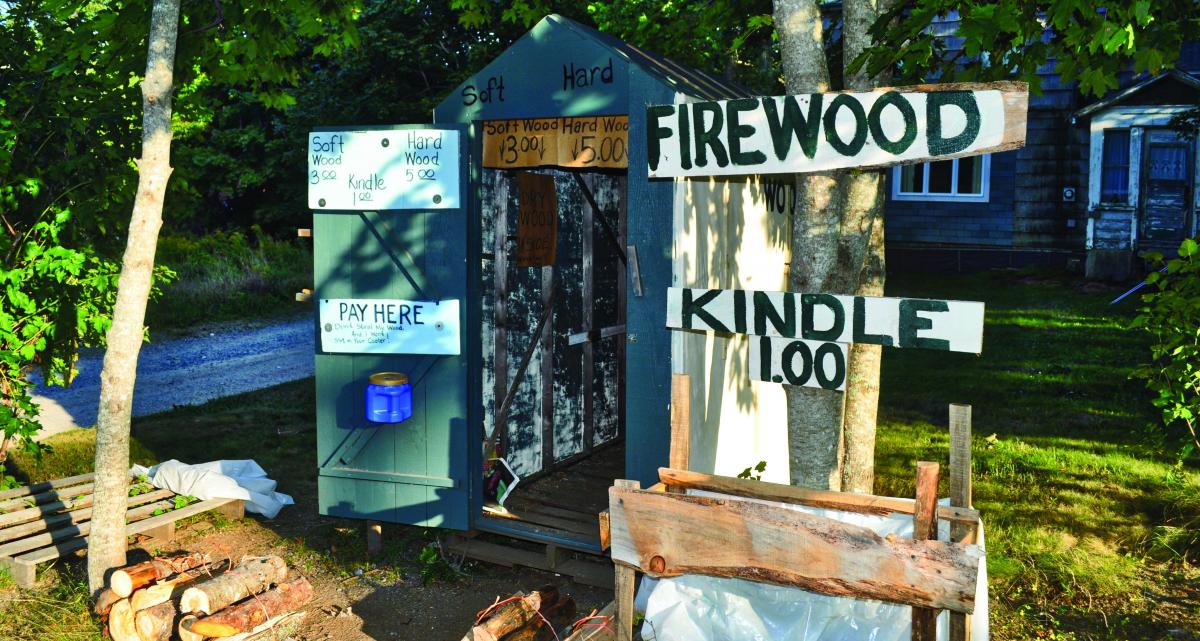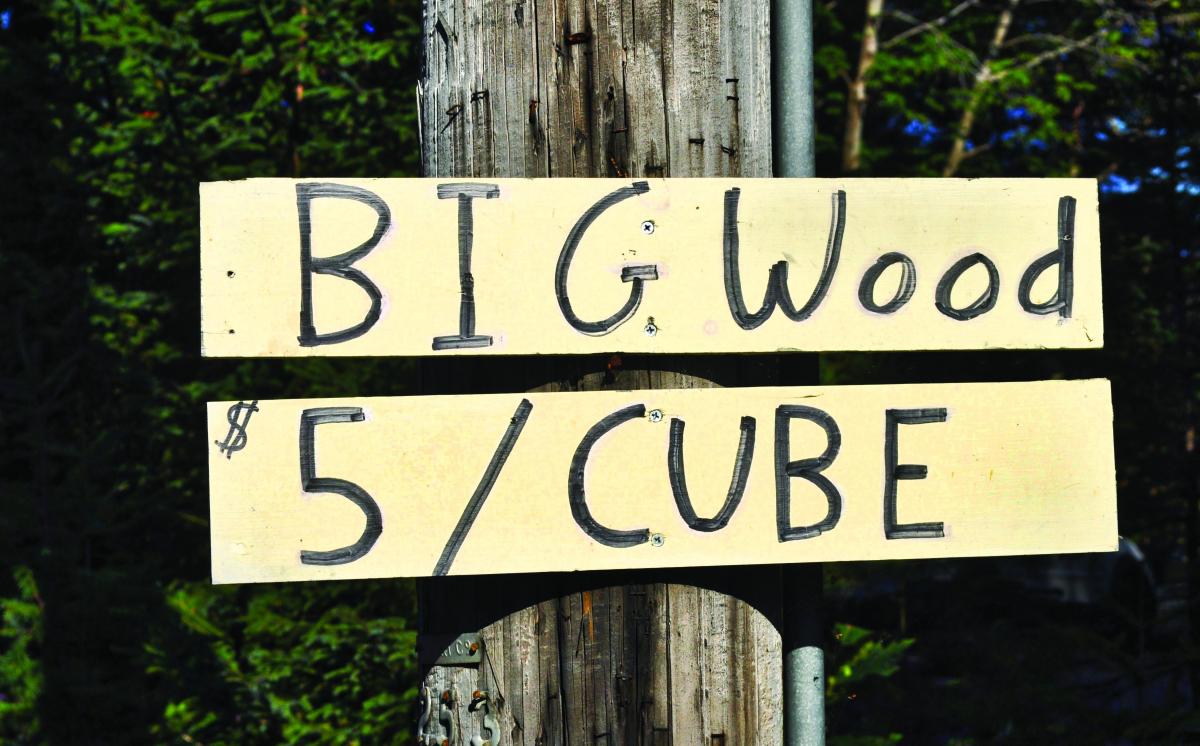Photos by Karen O. Zimmermann
Campers need bonfires, and bonfires require firewood. Every summer roadside stands appear near campgrounds up and down the coast, as well as inland. I doubt anyone makes a career from selling firewood—it is just one of many jobs in the income jigsaw puzzle that Mainers put together to make a living.
 Roadside signs advertising wood for sale reflect the sellers’ personalities.There are three main components to this business: wood, a money box, and a sign. The stands range from elaborate sheds with illuminated signs, to shelters cobbled from bits of old blue tarp and scrap wood. They sport marketing efforts at their most basic. “Big bundles” one sign proclaims, while another offers dry wood for one price, and green wood—simply called “wood” and sure to smoke—for less. Some call it firewood, others say campwood, and then there is campfire wood, or bonfire wood. Some entice with offers of newspaper and kindling, others wisely have more than one sign, starting several yards away, allowing potential customers time to slow down and pull off the road.
Roadside signs advertising wood for sale reflect the sellers’ personalities.There are three main components to this business: wood, a money box, and a sign. The stands range from elaborate sheds with illuminated signs, to shelters cobbled from bits of old blue tarp and scrap wood. They sport marketing efforts at their most basic. “Big bundles” one sign proclaims, while another offers dry wood for one price, and green wood—simply called “wood” and sure to smoke—for less. Some call it firewood, others say campwood, and then there is campfire wood, or bonfire wood. Some entice with offers of newspaper and kindling, others wisely have more than one sign, starting several yards away, allowing potential customers time to slow down and pull off the road.
It’s a tough business—theft is a big problem. This surprises me. Buying from veggie or flower stands with the honor system has always been part of my life. Not paying for what is so sweetly and trustingly offered is not something I will ever understand. There is not much profit in selling wood, and theft makes it even less. More and more signs speak to potential wood thieves—some comical, some heartfelt.
 The uniqueness of these stands delights. There are no computer-generated signs, Square CC readers, or prefab stands. Each one speaks of the seller’s personality. Neat piles and clear signage seem to indicate that the seller cares and is selling good wood, and vice versa.
The uniqueness of these stands delights. There are no computer-generated signs, Square CC readers, or prefab stands. Each one speaks of the seller’s personality. Neat piles and clear signage seem to indicate that the seller cares and is selling good wood, and vice versa.
How the wood is bundled is also revealing. Hand-bundling is time-consuming, but results in a rustic, more appealing product. If I were looking for firewood, that is what I would choose to buy. Knowing a person has tied each one of those bundles, trying to make them all equal, is reassuring, especially compared to wood that comes wrapped in plastic.
Whether the wood is hardwood or soft was rarely mentioned five years ago, but now signs proclaim the difference. Hardwood burns hotter, lasts longer, and is best for cooking. If you want a blazing, sparkling fire to sit around, tell tales, and watch sparks go skyward, however, soft wood is your best choice.
 Whether hard or soft, plastic-wrapped or hand-tied, please do buy your wood in Maine. Out-of-state wood can harbor hardwood borers and other non-native insects that can destroy our hardwood forests.
Whether hard or soft, plastic-wrapped or hand-tied, please do buy your wood in Maine. Out-of-state wood can harbor hardwood borers and other non-native insects that can destroy our hardwood forests.
Full disclosure: my husband and I have sold wood for years. At one time I helped cut the wood to length, and tied the bundles with twine. Now we buy it for two dollars and sell it for three. I am not convinced that is enough of a margin, given the time involved in moving the wood, making signs, and absorbing theft. My husband thinks it is an acceptable profit, or maybe he just likes selling wood.
Karen O. Zimmermann is a graphic artist and owner of Z Studio Design in Bar Harbor. She writes a blog that can be found at www.mainemorsels.bangordailynews.com.






